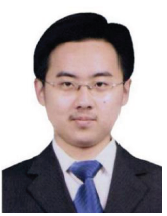
Personal :
He received his bachelor's degree in physics from Peking University in July 2012, his Ph.D. in physics from Columbia University in February 2019, and his co-teacher is Professor Andrew Millis. In March of the same year, he joined the team of Professor Xu Gang to start postdoctoral research.
Research areas:
The research direction of the doctoral period is the material calculation of strongly associated electrons, which mainly includes two parts of material analysis and computational method research. The first part of the material analysis mainly involves the first-principles calculation of the actual strongly related materials. Strongly related materials usually contain transition metal atoms with valence electrons of d electrons or f electrons, in which 3d electrons have the strongest correlation effect, 4d, 5d electrons have strong correlation and spin-orbit coupling, 4f, 5f electrons (ie Lanthanides and actinides can exhibit complex behaviors such as heavy fermions, strong correlations, and spin-orbit coupling. All of these electronic behaviors are closely related to the electrical, magnetic, optical, and transport properties of the material.
Due to the complexity of the actual materials, first-principles calculations usually use simpler calculation methods based on band theory, such as density functional theory (DFT), DFT+U, etc. Therefore, strong association algorithm research is usually carried out for strong correlation models. For example, the Hubbard model simplifies the electron-electron interaction to a localized effect between two spin-opposite electrons on the same lattice point, while the Anderson impurity model assumes that there is only one or a few grid points with electron-electron interactions. effect. Related algorithms include Dynamic Mean Field Theory (DMFT), Quantum Monte Carlo Method (QMC), Density Matrix Renormalization Group Method (DMRG), and so on.
Algorithms developed from the model can also be applied to actual materials such as DFT+DMFT, GW+DMFT, etc. Algorithms can also be developed from practical materials combined with chemical experience, such as density matrix embedding theory (DMET), including embedded theory based on electronic configuration (HF) and electronic pair configuration (AGP). After coming to the group of Xu Gang, he will turn to the direction of the topological materials and magnetic materials, and find the combination point with the strong correlation direction to do some comprehensive research work.
Main publications:
1. Zhuoran He, “Computational studies and algorithmic research of strongly correlatedmaterials”, arXiv:1902.06606 (2019) (PhD dissertation)
2. Zhuoran He and Andrew Millis, “Entanglement entropy and computational complexity of the Anderson impurity model: driven dynamics”, arXiv:1902.05664 (2019)
3. Zhuoran He and Andrew Millis, “Entanglement entropy and computational complexity of the Anderson impurity model: quench dynamics”, Phys. Rev. B 96, 085107 (2017)
4. Zhuoran He and Andrew Millis, “Photoinduced phase transitions of narrow-gap Mott insulators: the case of VO2”, Phys. Rev. B 93,115126 (2016)
5. Zhuoran He and Andrew Millis, “Strain control of electronic phase in the rare earthnickelates”, Phys. Rev. B 91, 195138 (2015)